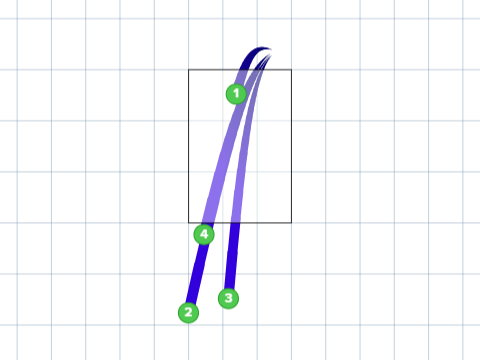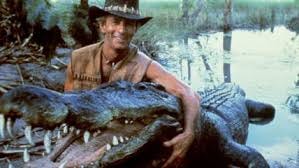Everything wrong with baseball in just one play
I watched this video multiple times so you don’t have to…
This past Tuesday the Detroit Tigers played the Minnesota Twins and going into the bottom of the ninth inning had a one-run lead.
With a one-run lead the very last thing a pitcher wants to do is walk the lead-off batter. (Lead-off walks are the absolute worst kind of walk because that means the other team has all three outs available to move the runner around the bases, which is how they used to play baseball before Brad Pitt ruined it.)
So naturally, the Tigers pitcher – Gregory Soto – walked the Twins lead-off batter on four pitches. (Although you gotta give some credit to home plate umpire – John Tumpane – who called the first pitch a ball, even though it was well within the strike zone as you can see from this handy-dandy graphic.)
That lead-off walk to Trevor Larnach prompted a mound visit and the MLB.com website I looked at doesn’t say exactly who visited Soto, but I’m guessing it was the Tigers pitching coach and he probably said something like:
“What the hell are you doing? Throw strikes.”
Which promptly led to yet another four-pitch walk, but it might have been semi-intentional because Soto also managed to mix in a wild pitch which meant the runner on first base was now on second base and first base was open.
So the left-handed Soto walked the right-handed Gio Urshela, maybe to get to the left-handed Max Kepler (and if we start getting into matchups and why left-handed pitchers have an advantage against left-handed hitters we’ll be here forever) so let’s just say facing Kepler appeared to be the right move because Kepler struck out on three pitches, none of which Kepler swung at even though in Old-Time Baseball (which, through the miracle of analytics, we no longer play) Kepler’s main job was to make sure the tying and winning runs wound up on second and third base; a job he failed to do.
A horseshit at-bat that accomplished nothing.
OK, so tying run on second base and winning run on first base with one out and Miguel Sano was at the plate.
The Tigers were in a right-handed infield shift, meaning the second baseman migrated to the pull side of the field, and if you pay attention to these defensive shifts and what happens after a ball is put in play, the cutoffs and relays often get screwed up because if your second baseman is on the left-field side of second base and needs to get to the right-field side of second base to relay a throw from the outfield he has a long-ass run if he even bothers to go and will often be late and/or out of position.
(But don’t worry about fundamental stuff like that because most fans won’t notice and putting 19 guys in left field shows you’re up to date on modern defensive positioning and you won’t get accused of being stuck in the past which is an excellent way for a coach to get fired by the 14-year-old analytics genius who is now your team’s GM.)
Sano lines the ball to right field
The Tigers right fielder, Robbie Grossman, has played the majority of his career games in left field and if you think playing left field and right field are pretty much the same, you probably haven’t played much of either. (Balls slice and hook differently, depending on which field you’re playing.)
I wasn’t there, but you’d think the Tigers would be playing “no doubles” in the outfield.
“No doubles” means the outfielder’s number one job is keeping the ball in front of him because while a single might score the tying run, a double might score the winning run, so an outfielder wants to run a slightly deeper route to keep the ball in front of him, which Grossman failed to do. (The first time the camera shows Grossman, he appears to be running laterally and then realizes he’s too shallow and starts bending his route to get deeper.)
But the Tigers right fielder was not the only one screwing things up.
Trevor Larnach’s bad base running
The ball went off Grossman’s glove and all the way to the wall and somehow Trevor Larnach (the runner on second, just in case you forgot) only advanced 90 feet.
Which might be acceptable if there were no outs, but with one out the right play (or what used to be the right play and I have no idea what they’re promoting now) is for a runner on second base to go halfway between second and third on a questionable catch.
Here’s the logic on that:
With nobody out the runner on second base goes back to tag second so he can get to third base with one out which will allow him to score on a productive out and if the ball isn’t caught the worst you can do is a runner on third base with nobody out.
But with one out the runner on second base goes halfway between bases because if the ball isn’t caught he’ll score and if the ball is caught there are now two outs and the benefits of being on third base are largely reduced. (Although there are still some benefits which we’re going to ignore for the sake of brevity which I seemed to have abandoned about five paragraphs ago.)
According to Old Time Fundamental Come to Jesus Baseball, Larnach only advancing 90 feet was a big base-running mistake.
Jonathan Schoop’s horseshit relay throw
But first, a word about the word “horseshit.”
As we all know “bullshit” means untrue or nonsense, but in baseball “horseshit” means lousy and they use it a lot like “that was some horseshit base running” or “that umpire made a horseshit call” and it’s the perfect word to describe bad baseball or poor writing with run-on sentences and too many digressions and right about now seems like a very good time to return to our main story.
Anyway…
The Tigers second baseman – Jonathan Schoop – took the throw from the right fielder Grossman, turned and fired the ball into the ground and it bounced three times before reaching the Tigers catcher, Eric Haase, and to make things look just a little more like a Bad News Bears outtake, the throw was also off-line to the first base side of home plate.
Gio Urshela’s even worse base running
So Larnach stopped on third base and even though he had the play in front of him, Gio Urshela rounded second and tried to join Larnach on third base which – unless they’ve changed the rules when I wasn’t looking – is one more runner than baseball currently allows.
Ask longtime baseball people about base running and they just might tell you it’s the most under-appreciated phase of the game.
(Also: about the ninth time I watched this video I noticed the on-deck hitter – Ryan Jeffers – put his hands on top of his head like a guy saying, “Oh Shit!” while watching a traffic accident about to happen, which if you think about it, is pretty much exactly what took place.)
Eric Haase and some bad decision-making followed by some worse throwing
So now Tigers catcher Eric Haase had the ball and was running toward third base, getting ready to make a throw, even though his third baseman – Jeimer Candelario – was frantically signaling the right play was actually at second base and whichever middle infielder decided maybe it was a good idea to actually cover second base was also waving his arms to get Haase to look at him.
Haase ignored both his teammates and decided the right thing to do was throw the ball to third base even though Trevor Larnach was already standing on it and Gio Urshela was the runner stranded between second and third.
Even though he had time to set his feet, Haase threw on the run and managed to launch a throw completely over his third baseman and into left field which allowed both Larnach and Urshela to score and the Twins won the game on a walk-off error.
Which you’d think would be the end of the Tigers mistakes, but as they say in the Ginsu Knife commercials: wait, there’s more.
Austin Meadows in no-man’s land
The Tigers left fielder – Austin Meadows – was not backing up third base, which was what allowed the winning run to score. I have no idea what Meadows was doing because he wasn’t backing up second base either and in the MLB.com video you can see Meadows walking (that’s right, walking) in left center toward center field and looks like he’s kinda sorta thinking of backing up second base, but isn’t in a big hurry to get there.
And now, the cherry on top
Because Meadows decided to go walkabout, a Tigers middle infielder had to chase the ball down the left field line, picked it up and threw it to Candelerio at third base and if you watch the play to its bitter end and ignore what’s happening at the plate, you see Candelerio think he still has a play that matters and he tries to tag Sano who tries to avoid the tag which indicates both players didn’t understand the situation because the winning run had already scored and the game was already over.
How we got here
Because analytics over-value offense and under-value defense (even though preventing a run is just as important as scoring one, but defense is hard to measure so it often gets ignored) teams are playing horseshit defenders if they hit enough home runs and the result is a shitshow like this which would be embarrassing in Little League, much less on a Big League Ballfield.
And I just read an article about how much defensive versatility is valued because it allows managers to shuffle around their lineups so guys own four gloves because they don’t know where they’re playing that night and my response to that is a lot of these guys have a hard time playing one position, much less three.
Watching this play makes you understand why players from another generation think baseball is currently a mess, but the Twins announcers had no problem with it as long as the Twins won and one of them said:
“A base running blunder, but who cares?”
Frankly, the Twins should care because if they keep running the bases like this it will hurt them a lot more often than it will help and people who love baseball should also care, because the game is already losing fans and amateurish plays like this don’t help.












Great analysis.
One of your best baseball columns, love the analysis!